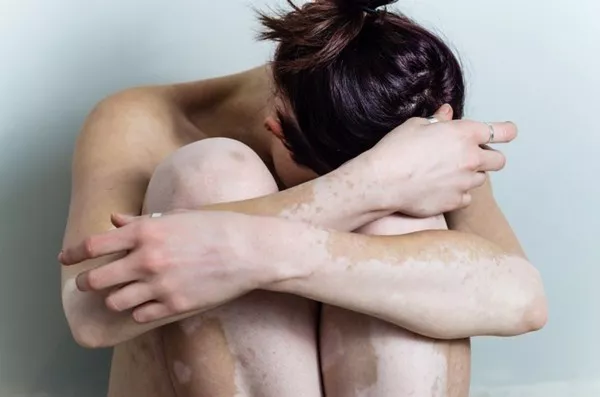Vitiligo is a chronic skin condition characterized by the loss of pigmentation, resulting in white patches on various parts of the body. The exact cause of vitiligo is not fully understood, but it is believed to involve a combination of genetic, autoimmune, and environmental factors. Traditional medical treatments for vitiligo include topical steroids, immunomodulators, phototherapy, and surgical options. However, some individuals seek alternative treatments, such as homeopathy, to manage this condition. This article explores the principles of homeopathy, its potential effectiveness in treating vitiligo, and scientific perspectives on its use.
Understanding Homeopathy
Homeopathy is a system of alternative medicine founded in the late 18th century by Samuel Hahnemann, a German physician. It is based on two main principles:
- The Law of Similars: This principle, often summarized as “like cures like,” suggests that a substance that causes symptoms in a healthy person can be used in diluted form to treat similar symptoms in a sick person.
- The Law of Infinitesimals: This principle involves the process of serial dilution and succussion (vigorous shaking) of a substance, which homeopaths believe enhances its therapeutic potency while minimizing its toxicity.
Homeopathic remedies are derived from various natural sources, including plants, minerals, and animal products. These remedies are prepared through a process called potentization, which involves repeatedly diluting and succussing the original substance.
Homeopathy and Vitiligo
In homeopathy, vitiligo is viewed as a manifestation of an underlying imbalance in the body’s vital force, which governs health and disease. Homeopathic treatment aims to address this imbalance and stimulate the body’s self-healing mechanisms. Practitioners select remedies based on a holistic assessment of the patient’s physical, emotional, and psychological symptoms, rather than solely focusing on the vitiligo patches.
Common Homeopathic Remedies for Vitiligo
Several homeopathic remedies are commonly prescribed for vitiligo. The choice of remedy depends on the individual’s overall health, constitutional type, and specific symptoms. Some of the frequently used remedies include:
- Arsenicum Album: This remedy is often indicated for individuals with fair skin who experience burning sensations and anxiety. It is believed to help in cases where vitiligo is accompanied by digestive disturbances and respiratory issues.
- Calcarea Carbonica: Suitable for individuals who tend to be overweight, easily fatigued, and have a sluggish metabolism. It is considered when there are associated symptoms like coldness, sweating, and craving for sweets.
- Natrum Muriaticum: This remedy is commonly used for individuals who are sensitive, introverted, and have a history of grief or emotional trauma. It is believed to be effective in treating vitiligo that worsens in the sun and is accompanied by dry skin and a craving for salt.
- Sepia: Indicated for individuals who feel overwhelmed, indifferent, and irritable. It is considered when vitiligo is associated with hormonal imbalances, particularly in women.
The Homeopathic Treatment Process
The homeopathic treatment process for vitiligo typically involves the following steps:
- Detailed Case Taking: The homeopath conducts a comprehensive interview to gather information about the patient’s medical history, lifestyle, emotional state, and specific symptoms. This information helps the practitioner select the most appropriate remedy.
- Selection of Remedy: Based on the individual’s unique presentation, the homeopath selects a remedy that closely matches their symptom profile.
- Administration of Remedy: The chosen remedy is administered in a potentized form, often as small pellets or liquid drops.
- Follow-up Consultations: Regular follow-up consultations are essential to monitor progress and make any necessary adjustments to the treatment plan.
SEE ALSO: How to Prevent Vitiligo Naturally
Scientific Evidence and Efficacy
The effectiveness of homeopathy in treating vitiligo, like many other conditions, remains a subject of debate within the medical community. Scientific research on homeopathy is challenging due to the individualized nature of the treatment and the high dilutions of the remedies used. Several factors contribute to the controversy:
- Lack of Standardization: Homeopathic treatment is highly individualized, making it difficult to standardize and compare results across studies.
- Placebo Effect: Critics argue that the benefits reported by patients undergoing homeopathic treatment may be attributed to the placebo effect rather than the remedies themselves.
- Inconclusive Studies: Some studies suggest positive outcomes, while others find no significant difference between homeopathy and placebo.
A systematic review published in the British Journal of Dermatology in 2011 evaluated the effectiveness of homeopathy in treating various dermatological conditions, including vitiligo. The review concluded that there is insufficient evidence to support the use of homeopathy as a standalone treatment for vitiligo. However, it acknowledged that some patients may experience subjective improvement and enhanced quality of life through individualized homeopathic care.
Integrative Approaches
While scientific evidence supporting homeopathy for vitiligo is limited, some individuals find value in integrative approaches that combine conventional and alternative treatments. Integrative dermatology emphasizes a holistic approach to skin health, addressing not only the physical symptoms but also the emotional and psychological well-being of the patient.
Safety and Considerations
Homeopathy is generally considered safe when administered by a qualified practitioner. The remedies are highly diluted, minimizing the risk of adverse effects. However, individuals considering homeopathic treatment for vitiligo should keep the following points in mind:
- Consult a Qualified Practitioner: It is essential to seek treatment from a licensed and experienced homeopath who can provide appropriate guidance and supervision.
- Complementary, Not Replacement: Homeopathy should be viewed as a complementary approach rather than a replacement for conventional medical treatments. Patients with vitiligo should continue to follow their dermatologist’s recommendations and consider homeopathy as an adjunctive therapy.
- Manage Expectations: Patients should have realistic expectations about the outcomes of homeopathic treatment. While some individuals may experience improvement, others may not see significant changes in their vitiligo patches.
Conclusion
Homeopathy offers a holistic and individualized approach to managing vitiligo, aiming to address underlying imbalances and stimulate the body’s self-healing mechanisms. While there is limited scientific evidence supporting its efficacy as a standalone treatment for vitiligo, some individuals may find value in integrating homeopathy with conventional therapies. As with any alternative treatment, it is crucial to consult a qualified practitioner and maintain open communication with healthcare providers to ensure a comprehensive and safe approach to managing vitiligo.
Related Topics:
























